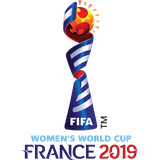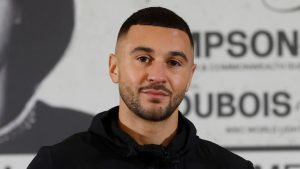Title IX stories: Legislation’s global impact on women’s soccer still felt today


By Doug McIntyre
FOX Sports Soccer Writer
EDITOR’S NOTE: This story is part of FOX Sports’ series commemorating the 50th anniversary of Title IX, which was enacted into law on June 23, 1972. The series tells the stories of significant women in sports today, both celebrating the progress that has been made and recognizing the barriers that still remain.
As the 50th anniversary of Title IX approaches, we’re still learning how that landmark legislation changed women’s sports in the U.S. and, eventually, around the world.
Title IX provided female athletes with opportunities they’d never had before. In the decades since the law’s passing, thousands of athletic scholarships to some of America’s leading universities have been made available to — and earned on the field of play by — thousands of women who otherwise might not have gotten the chance.
Gradually, Title IX also changed the face of national teams representing the United States. At the Summer Olympics in Munich in 1972, the year Title IX was adopted, just 84 of the 400 athletes on Team USA were women. Four decades later in London, there were more women than men. (At the Winter Games in Beijing earlier this year, there were 115 men, 108 women and one non-binary competitor from the U.S.)
Perhaps no American squad has benefited more from Title IX than the four-time world champion U.S. women’s soccer team. The USWNT won the inaugural Women’s World Cup in 1991 and the first of four Olympic crowns in 1996 — the first year medals were awarded for women’s soccer.
“Title IX gave our women’s team a head start,” said U.S. Soccer president Cindy Parlow Cone, who, as a sophomore midfielder at the University of North Carolina, was the youngest player on that 1996 U.S. team in Atlanta. “I think that’s why we started out on top and why we’ve continued to be on top for so long.
“Everyone else is trying to catch up.”
As profound an influence as Title IX has had on the USWNT, its impact can be seen today far beyond American borders. To Parlow Cone’s point, it created a domino effect within the women’s game. Over time, the USA’s dominance at the international level forced other countries — in particular, rich Western European nations such as France and Germany, which had long fielded elite teams on the men’s side — to invest in their own programs.
Professional women’s soccer has exploded in Europe in recent years. At the 2019 World Cup in France, seven of the eight quarterfinalists were from the continent. In April, 91,648 fans packed into the iconic Camp Nou Stadium in Barcelona to watch the home team take on German side Wolfsburg in the first leg of the UEFA Women’s Champions League semifinal, setting a world record for attendance at a women’s game.
This, though, is a fairly recent phenomenon. The first women’s professional league in the U.S. began in 2001 but lasted only two years. The National Women’s Soccer League, the third try at a sustainable pro women’s circuit in the U.S., is just a decade old. Overseas, Italian titan Juventus didn’t begin fielding a women’s team until 2017. Manchester United women’s team was founded the year after that.
For a long time, the NCAA was as close to professional soccer as many foreign players could get. Canada’s Christine Sinclair — the all-time top scorer in international soccer, men’s or women’s — attended the University of Portland, setting the all-time single-season goals mark and winning a national title her senior season.
“We had so many of our players playing in the States that often I’d end up playing against my national team teammates,” said longtime Canadian national team goalkeeper Karina LeBlanc, who played four years at the University of Nebraska. “It was the highest level of play, but it was more than just that — there was the infrastructure that was in place. The weight room, the food that we got every day, it was equal to the football team.
“Our football team won the Orange Bowl and because of Title IX, they had to divvy up the revenue,” added LeBlanc, who’s now the GM of the NWSL’s Portland Thorns. “Our women’s soccer team saw a massive increase in investment. The importance of women’s sports at universities was heightened because of Title IX.”
Around the world, the fight for equal conditions continues — even on the global stage. The 2015 FIFA Women’s World Cup was played on artificial turf, as opposed to natural grass, much to the chagrin of the participants. “[It] was a slight to the women’s game,” former U.S. coach Jill Ellis, who won that World Cup and a second in 2019, told FOX Sports. “Because it never would’ve happened on the men’s side.”
Similar indignities still occur regularly in the professional game.
“I wish there was a Title IX for clubs because it would have a similar impact,” said Costa Rican national teamer Raquel “Rocky” Rodriguez, who as a teenager moved to the U.S. to play for Penn State. Rodriguez scored the winning goal in the 2015 College Cup final for the Nittany Lions, whose program began in 1979 after women were barred from playing intramural soccer at the school. A well-traveled professional for the past six years, Rodriguez, now a midfielder for the Thorns, noted that most women’s pro teams still operate on shoe-string budgets.
Still, investment in women’s soccer is exploding at the club level — especially in Europe. The sport’s popularity and cultural relevance there, combined with the massive financial resources available to fanatically supported, century-old institutions, suggest that the next step in the evolution of women’s soccer will happen overseas. For the first time, top U.S. national-team prospects are choosing to begin their club careers not in the NWSL but with brand-name teams abroad. Last month, USWNT forward Catarina Macario, who signed for French power Lyon in 2020 after starring at Stanford, became the first American to score in a Champions League final.
The NCAA is still churning out lower-level pros, too, as well as dual citizens such as Ali Riley, who was born and raised in Southern California but captains New Zealand‘s national squad.
“Having collegiate soccer players go and play in these other leagues also boosted those leagues in terms of the talent pool and making those leagues competitive,” said Riley, who now plays for hometown team Angel City after stops in Sweden, Germany and England. “Not everyone can play in the NWSL.”
For now, though, the U.S. remains the standard-bearer when it comes to women’s soccer. That’s thanks largely to Title IX.
“In New Zealand, there’s no professional domestic league, so the U.S. was somewhere women could go to basically have a career,” Riley said. “Getting a scholarship to play is worth tens of thousands of dollars, plus you’re getting a great education.
“Obviously, we’re still fighting for more visibility and recognition,” she added. “Things take time. As soon as Title IX was passed, things weren’t just super equal everywhere right away. But compared to other countries, women athletes have status in the U.S. When I was growing up, seeing Mia Hamm in commercials, seeing the Williams sisters, that plays a huge role.”
So does the success of someone such as Ellis. She is the only coach, men’s or women’s, to win two World Cups since Italy’s Vittorio Pozzo first did it in 1938. Yet as a little girl growing up in England, Ellis wasn’t allowed to play in an organized setting. The English FA actually banned women’s soccer until 1971, when Ellis was 5.
“I never heard of Title IX living in England. I didn’t know what it was,” said Ellis, who’s now the president of the NWSL’s San Diego Wave. “But the global impact of the U.S. passing a law gave opportunity and set a standard for inclusion, the reverberation of which has been felt around the world. Because the U.S was leading in so many ways in sports, people looked at that, and it became the model. It became the standard and the goal.
“Outside of U.S. borders, Title IX affected so many little girls that never had the chance to play sports. I’m not in a position to have had the chance to coach the U.S. women in two world championships without that law passing.
“All roads lead back to that.”
One of the leading soccer journalists in North America, Doug McIntyre has covered United States men’s and women’s national teams at multiple FIFA World Cups. Before joining FOX Sports in 2021, he was a staff writer with ESPN and Yahoo Sports. Follow him on Twitter at @ByDougMcIntyre.
Get more from FIFA Women’s World Cup Follow your favorites to get information about games, news and more.







